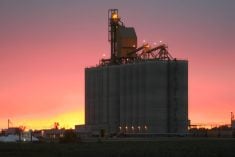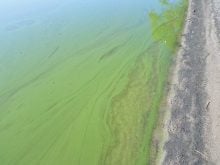Don’t underestimate Japanese brome, says Lethbridge-area producer Alex Russell. It is a much more aggressive weed than downy brome and it can germinate almost any time of the year. Russell says Japanese brome was already germinating in the stubble of his winter wheat fields in September of last year.
“My advice is for producers to be watching and deal with it in the fall,” says Russell. He says that while it does pose risks as a spring-germinating weed, it’s best to watch for it in the fall. “I consider it a very aggressive, very opportunistic weed,” says Russell. “It never used to be here. Downy brome was a common-enough weed, but we applied control measures, and it was almost a non-issue on our farm, but now in recent years we are seeing more Japanese brome and it will germinate fall or spring. It will even encroach on native pasture whether it has been grazed or not.”
Read Also

Cancer agency reclassifies another herbicide ‘probably carcinogenic’
The WHO’s cancer research agency has now put atrazine, a herbicide well known to corn growers, in the same potential-hazard category where the agency put glyphosate.
Russell says that if farmers see any sign of Japanese brome this fall to treat it with a low rate of glyphosate to keep it under control. “It is cheap enough to do,” he says. “Hit any patches in the fall, and then if any do come along in the spring, you can spray them again.” Russell says if left untreated the weed will aggressively spread.
The presence of Japanese brome raises the bigger issue of lack of regulations or control concerning the transport of equipment and grains from outside the region. Russell says the first evidence of Japanese brome appeared in the Lethbridge area, he suspects, carried in on equipment owned by custom combining operators coming in from the U.S. Fusarium head blight (FHB) is another example of an introduced pest carried into the region on feed grains sourced from FHB-prone areas of the Prairies. “It was never here before and you can see where it first developed in fields near the rail lines, or where trucks have been hauling feed grains,” he says. “And now efforts to prevent the spread of the disease have a real economic impact on producers.”
With reports of herbicide-tolerant weeds such as glyphosate- resistant kochia in parts of the U.S. grain belt, Russell is concerned if care isn’t taken to properly clean machinery used on both sides of the border, the seeds of those super-weeds could end up in Canada.
LeeHart














